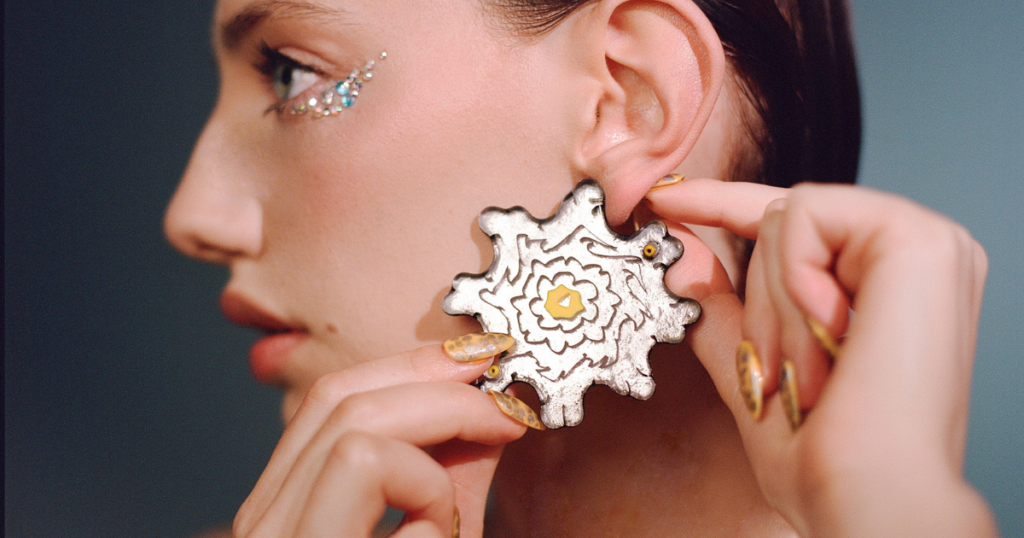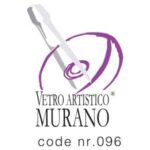Discover the history of Italian glass jewellery from Murano. Italian glass jewellery isn’t just an accessory; it’s a vibrant tapestry of culture, history, and sheer creativity. Renowned worldwide for its stunning craftsmanship and flamboyant colours, this art form finds its soul on the charming island of Murano, just a stone’s throw from Venice.
Trust us, this island is a treasure trove of innovation, where centuries-old techniques dance with modern flair. Buckle up, because we’re about to take a short but lively journey through the captivating history of Italian glass jewellery. And you will see how we at Wave Murano Glass are flipping the contemporary scene on its head!
The Beginning of Glassmaking
Roman times
Let’s hop back to Roman times, when glass was the ultimate luxury item flaunted by the elite. Imagine skilled artisans weaving their magic with molten sand, crafting delicate vessels and beads that were not just functional but were also dazzling statements of status with intricate patters (Barbieri, 2006, p. 14). They invented techniques land pushed boundaries to create intricate shapes.
Sure, these glass objects held everything from precious oils to scents fit for emperors, but they also found their way into jewellery boxes, becoming prized possessions of the Roman elite (Fuga, 2008, p. 26).
But then—plot twist!
The fall of an empire
With the fall of the Roman Empire in the 5th century, glass production took a nosedive. Enter Christianity, which gently nudged the vibrant glass jewellery of the Romans to the sidelines. But don’t worry; the Middle Ages brought about a renaissance for glassmaking, especially as Venice transformed into a bustling trading hub.
Glass Innovations of the Middle Ages
After the decline in glass production post-Rome, the 9th century saw a remarkable revival.
Venetian merchants built extensive trade networks across the Mediterranean, exchanging not just goods but ideas and techniques. Venice was the ultimate melting pot of cultures, where artisans mingled and sparked new developments in glassmaking.
One pivotal aspect of this revival was the introduction of new techniques and materials, laying the foundation for the distinctive style of Venetian glass.
Paving the way forward for Murano Island
Notably, the use of lead glass and improved glassblowing techniques allowed for more intricate designs and delicate forms. Artisans began producing coloured glass, incorporating mineral pigments to achieve vivid hues that had been difficult to attain previously. This innovation caught the attention of European nobility and reignited a passion for glass. By the time of the Renaissance, glass was back, and it was more magnificent than ever!
The Rise of Murano Glass & Italian Glass Jewelry
Fast forward to 1291, when Venice made a game-changing decision in relocating all glassmakers to the island of Murano. Originally this act was a fire-safety measure (and we all know how flammable glass factories can be!), but this move blossomed into something extraordinary.
The shift allowed Murano to transform into a tight-knit community of glass artists, fiercely guarding their trade secrets and specialising in niche skills (Gasparetto, 1986, p. 39). The artisans of Murano began to revolutionise the craft. The era of Murano Glass was formed.
For centuries, Murano glass makers held a near-monopoly on fine glass production, pioneering and perfecting many techniques, including the creation of optically clear glass, enamelled glass (known as smalto), glass with gold threads (aventurine), multicoloured glass (millefiori), milk glass (lattimo), and imitation gemstones.

Enter the Sommerso technique, a mesmerising process of layering colours to create depth and vibrancy (Turner, 1998, p. 246). And let’s not forget the enchanting millefiori, or “a thousand flowers,” where glass canes are fused and sliced to produce intricate floral patterns (Toninato, 2013, p. 67).

By the 15th and 16th centuries, Murano glass was the epitome of luxury, with perle di vetro (Murano beads) becoming the must-have accessory for the aristocracy across Europe (Barbieri, 2006, p. 78).
Although Venice zealously guarded its glassmaking secrets, some of these were eventually leaked to other European countries by the late 16th century, leading to the partial loss of its monopoly.
Contemporary Styles, Murano Glass Jewellery in Modern Times
As the 19th century rolled around, a revival was brewing, fuelled by a global obsession with all things Venetian.
Murano glassmakers were at it again, crafting a dazzling array of colours, shapes, and textures (Fuga, 2008, p. 82). Glass jewellery expanded beyond mere beads to include pendants, rings, and brooches, turning everyday adornments into audacious statements (Turner, 1998, p. 251).
Then came the mid-20th century, a glorious era for Italian glass jewellery as the world embraced handmade, artisanal products. Designers teamed up with Murano artisans, blending age-old techniques with contemporary designs, resulting in a fresh wave of jewellery that appealed to a broader audience without sacrificing the exquisite craftsmanship that made it legendary (Ricciardi, 2015, p. 511).
Keep the fire burning
Several historic glass companies still operate on the island, with brands like Venini, Alessandro Mandruzzato Ferro Murano, Barovier & Toso, Simone Cenedese, and Seguso being among the most well-known globally. To protect the authenticity of Murano glass from imitations, many of these factories use trademarks certifying the products’ origin. The oldest active glass factory on the island is Pauly & C. – Compagnia Venezia Murano, established in 1866.
The Legacy of Glass in Italian Jewellery
Today, Murano glass jewellery is all about breaking boundaries. Contemporary designers are having a blast with vibrant colours, abstract forms, and unique patterns, seamlessly merging tradition with modern fashion trends. Whether it’s a casual outing or a grand soirée, Murano glass pieces have the power to transform any outfit into a stunning work of art (Toninato, 2013, p. 74).
Legacy of the learnings
The journey of Italian glass jewellery from its Roman roots to today’s innovative designs is a testament to the relentless spirit of craftsmanship that Murano embodies. Each piece tells a story—a piece of Italian and Murano glass history and artistry that has stood the test of time. From delicate glass necklaces to bold glass earrings, every item carries the legacy of artisans who poured their heart and soul into it, making it an essential part of any jewellery collection (Gasparetto, 1986, p. 58).
New Era of Murano Glass
At Wave Murano Glass, we’re not just keeping the tradition alive; we’re redefining it. Our modern design, including glass jewellery, resonates with today’s discerning clients, blending the rich heritage of Murano glass, including the certificate of authenticity, with fresh, innovative designs.
Under the artistic guidance of our Cold-shop Manager, Giorgio Grosselle, we embrace sustainability by recycling and reusing glass for our pieces, minimising waste while weaving unique stories into every creation. From mosaic patters to fritted multicoloured glass, Giorgio brings new life to the offcuts in our factory.

Collaborations for Bespoke Design
Furthermore, as a brand, we’re passionate about collaborating with up-and-coming designers to craft intricate cane and murrina patterns for buttons, necklaces, and other stunning jewellery accessories.
These partnerships allow us to blend tradition with contemporary ideas, resulting in eye-catching pieces that celebrate the art of Murano glassmaking.
Samanta Virginio
In 2023, Wave Murano Glass worked with the brand Samanta Virginio to develop beautiful murrina for their new collection.
Samanta Virginio is London based women’s ready-to-wear brand founded in 2023 by CSM graduate Samanta Virginio. Her collections are inspired by her dual Italian-American heritage, nature, city life, pop culture, and muses both past and present.
For the murrina, we used traditional Murano glass shaping techniques and formed something unique and contemporary with the designer. The beautiful colours coming to life with Samanta’s stunning floral design, cut down into thin murrina creating a true touch of modern elegance.


Thinking bigger and bolder, our collaborations are not just unique; they are pioneering new dimensions in the world of Murano glass and redefining what’s possible in design.
We invite you to visit our studio, witness a free demonstration of the craft of glass blowing in action, and explore our exclusive collections in-store or online. Whether you’re treating yourself or finding the perfect gift, Murano glass jewellery and decor bring a touch of artistry and timeless elegance into every space. Wear a piece of history and carry the legacy of Murano with you!
References
- Barbieri, F. (2006). The Art of Glass: Venetian Glass from the Renaissance to the 19th Century. Metropolitan Museum of Art.
- Gasparetto, A. (1986). Murano: A History of Glass. Arsenale Editrice.
- Turner, E. (1998). “Murano Glass: Past and Present.” Journal of Glass Studies, 40, 245–268.
- Toninato, P. (2013). Millefiori Glass: A Study in Venetian Tradition and Innovation. Lund Humphries. Source
- Fuga, M. (2008). The Glass of Murano. Skira Editore.
- Ricciardi, M. (2015). “Revival of Murano Glass Jewelry in the 20th Century.”





